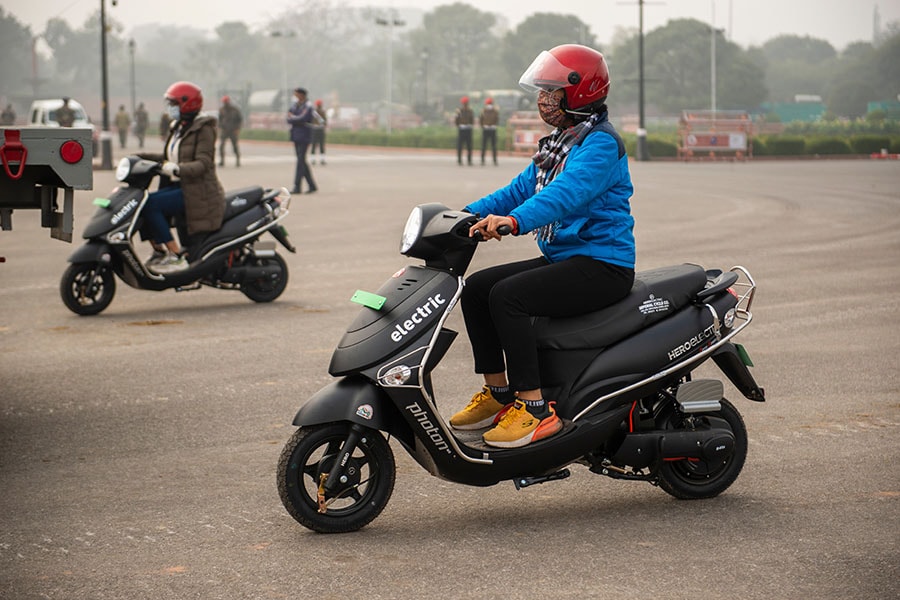
From commercial to consumer EVs: The upheaval afoot in India's EV Market
At the current juncture in India's EV journey, it would be safe to say India has achieved a unique EV ecosystem. While it started off with commercial vehicles going electric, there is a distinct shift in the market with more consumers adopting electric vehicles
 Share of e-two wheelers in overall two-wheeler sales has grown from less than 1 percent in 2021 to almost 4 percent as of October 2022.
Image: Shutterstock
Share of e-two wheelers in overall two-wheeler sales has grown from less than 1 percent in 2021 to almost 4 percent as of October 2022.
Image: Shutterstock
In 2015, the Indian government as part of its COP-21 commitments, enacted and implemented Faster Adoption and Manufacturing of Electric Vehicles in India (FAME) with an initial outlay of just Rs 895 crore. For the fledgling Indian EV industry at that time, it was a major boost, and the numbers showed up. In 2015, India saw 7,737 EVs being registered against 2,356 in 2014. By the time Phase 2 of FAME (FAME-II) was launched in 2019, India has already registered 2.5 lakh EVs. The second phase came with a far greater outlay of Rs 10,000 crore for a three-year period which was subsequently extended till 31st March, 2024.
Under FAME-II, various state governments have enacted their own EV policies with generous subsidies to encourage adoption and investments in charging infrastructure. The central government has also offered various Production Linked Incentive (PLI) schemes to spur manufacturing. All this has led to some interesting developments in the Indian EV ecosystem.
At the current juncture in India’s EV journey, it would be safe to say India has achieved a unique EV ecosystem. From registering just 2,657 EVs in 2013 to over 8 lakh EVs so far in 2022, the Indian EV industry has come a long way. This growth has largely been driven by two- and three-wheelers and continue to be over 95% of all EVs sold in India as of October 2022. A closer look at these numbers, though, over the years, reveal an evolving EV market with an impending transition.
India’s EV market is evolving
For instance, in 2021, e-two wheelers accounted for 47 percent and e-three wheelers 49 percent of all EVs registered in India. Compare that to 2019, when e-three wheelers represented 81 percent of all EVs registered while e-two wheelers accounted for a minor 17 percent.
While e-three wheelers essentially serve as commercial vehicles engaged primarily in last-mile commuter transportation, e-two wheelers, on the other hand, are geared towards personal use. As the numbers would suggest, the Indian EV industry from 2015 till 2019 largely grew catering to the commercial EV segment while the personal vehicles segment—mostly composed of two-wheelers—remained relatively small and underserved. However, following 2019, we notice a gradual shift in the market dynamics, indicating consumers were becoming more receptive towards e-two wheelers. For instance, 27,706 e-two wheelers were registered in 2020 which was slightly lower than in 2019 largely due to the pandemic. In 2021, the number was a staggering 147,784 with the segment registering a 433 percent growth. In 2022, sales are very likely to cross 5 lakh at the current rate, and will account for over 60 percent of all EVs sold in India surpassing e-three wheelers.







